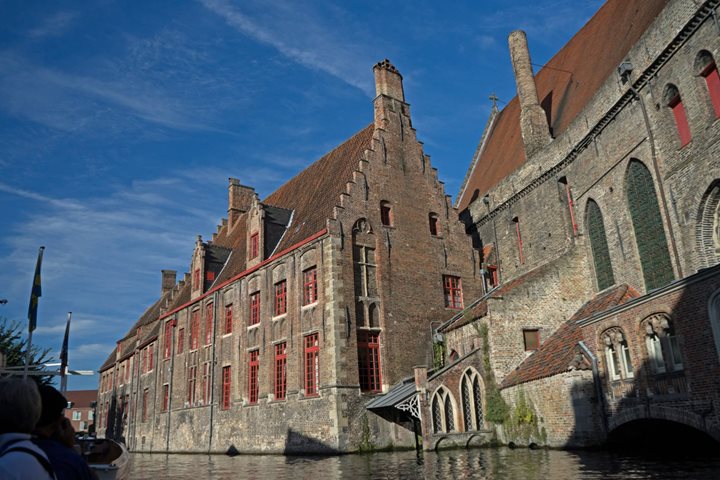As we cruised gently down the canals of Amsterdam, our guide explained, in her typically direct Dutch manner, that these beautiful, iconic waterways are like a toilet. Every day they are filled with the detritus of a major city… litter, random bicycles that fall from the sides of the canals and more. And every night, the locks are opened in a way that flushes out the dirty water and lets in the clean.
I am part Dutch, lived in Amsterdam for a year of my life and have a fluent understanding of the language, but the flushing fact was just one of many new things I learned about Amsterdam today. For example, Amsterdam has the highest per capita “foreign” population in the world (meaning residents for whom neither parent was born in the country). It is the second most densely populated country after Bangladesh. And, three main things the Netherlands are known for aren’t actually native: tulips are from the Black Sea, windmills are from Persia, and Delft pottery comes originally from China.
After we finished our exquisite appeltaart (Dutch apple pie), served with coffee and chocolates on the luxury canal cruise, we pulled up directly in front of the Rijksmuseum, the National Gallery of the Netherlands. Our experience there was short but well-curated to show off the best of what the museum has to offer, from the entrance tunnel filled with street musicians playing classical music, to the Gallery of Honor featuring renowned works by Jan Steen, Vermeer, and of course, Rembrandt.
I had the amazing opportunity to spend six weeks in Amsterdam on my own earlier this summer, and visited the Rijksmuseum three times during my stay. Every time I went the weather happened to be stunning, with high temperatures and clear skies. Today was no exception. My father and I decided to enjoy every minute of the unusually gorgeous day and left the museum on foot, with Dutch fast food in mind as our destination. We walked over to our favorite frites stand, where we shared an “oorlog” (Dutch for “war”): double fried french fries topped with dollops of mayonnaise, peanut flavored satay sauce, and chopped onions. The nearby fish stand served us the traditional raw herring (with pickles and onions, of course), along with some tasty “kibbling,” or pieces of fried cod.
The afternoon activities today involved a range of unique locations. Some guests stayed in Amsterdam to see the Rijksmuseum if they’d visited the Anne Frank Museum that morning. Others went on a lovely bike ride in the Vecht region of the Netherlands, while I joined the group to Haarlem. While the weather could have made any experience enjoyable, the city was absolutely lovely in its own right. Our tour guide helped us navigate the bike lanes before showing us around the looming Bavo Cathedral and taking us down the cobblestone streets to the Frans Hals museum.
Back in the bustling city of Amsterdam, we went as a group to the historical Dutch West Indisch House for a special musical performance by Izaline Calister, a singer from the Dutch Caribbean island of Curaçao. This evening was the first time in the last four years that Lindblad Expeditions had visited Amsterdam that the weather was nice enough to have our cocktails outside, and the music made it all the more enjoyable. Dinner was served inside in a gorgeous old room with large fireplace and glowing candelabras on all the tables that gave a truly unique ambiance to the night.
As we sailed out of Amsterdam on the IJ River, I was comforted to imagine the canals of the city being cleaned that night. There’s one thing I know for sure: they are some of the most beautiful and enchanting canals in the world.





